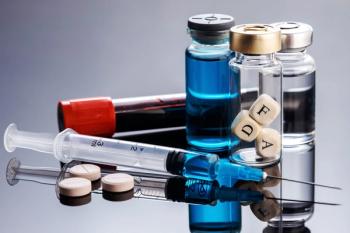
Syphilis Cases in the U.S. at a 72-Year High
Persisting stigma and COVID loneliness are partly to blame.
Syphilis rates in the U.S. have risen nearly 80% between 2018 and 2022. In 2022 alone, 207,255 cases of syphilis were reported to the CDC. In 2021, there were only 176,663 cases, the CDC reports.
Currently, rates are the highest they’ve been since 1950 when there were 217,558 cases (146 cases per every 100,000 citizens) according to a CDC
“There's a variety of reasons as to why we're seeing a rise not only in syphilis,” Lydiard began. “Funding for STDs [sexually transmitted diseases] tends to be limited, so it's underfunded. We also have a rise in drug use and alcohol use, which tends to lead to riskier sexual behavior.”
On average, symptoms appear 21 days after exposure, a
Syphilis was almost eradicated in the 1990s. In 1990, there were 135,590 cases and by the year 2000, there were only 31,618 cases, a historic low for the disease that may be attributed to safe sex practices adopted after the AIDS epidemic. However, it now seems that advances in HIV prevention have lulled some people into a false sense of safety.
“The treatment for HIV has gotten so much better, that folks aren't always thinking to reach for a condom, and so there's a decreased use in condoms, and that's increased syphilis,” Lydiard said.
The COVID pandemic also contributed to syphilis cases.
“When COVID hit, we all felt a loss in some way, whether it be isolation or the loss of a loved one or a friend and there were a lot of mental health challenges. One of the ways to solve some of that for folks was alcohol, drugs and sex."
Public health officials are especially worried about the rising rate of syphilis transmission from mother to baby, otherwise known as congenital syphilis. Within the last five years, there has been a 183% increase in the U.S., with Native American and Native Alaskan populations hit the hardest. In 2022, their communities experienced one congenital syphilis case for every 155 births, according to the
Native Americans are more likely to live in rural areas than any other racial or ethnic group, according to the 2020 Census. About 21.5% of the population live in rural areas when compared to 18.4% of white Americans and 9.9% of Black Americans.
“If you have to go an hour to a public health department to get a test or to a clinic, that's just not feasible for a lot of people,” Lydiard said. “They don't either have the transportation or they have to ask a friend and who wants to ask a friend, ‘Hey, can you take me to the public health clinic? I have an STD and I need a check-up.’ It's hard to have these conversations.”
The only way to prevent syphilis is through safe sex.
“If you're having unprotected sex, you're at risk for syphilis. That's just the way that it works,” Lydiard said. “Younger folks have this attitude of ‘I am invincible’ and unfortunately, they’re not. I'm not saying don't have sex. I'm saying choose your partners carefully.”
“I have hope for innovative prevention tools – such as a pill after sex that prevents STIs, and better tests for syphilis – but they will only be successful if they reach the people who will benefit," Jonathan Mermin, M.D., M.P.H., director of CDC’s National Center for HIV, Viral Hepatitis, STD and TB Prevention said in an HHS
Newsletter
Get the latest industry news, event updates, and more from Managed healthcare Executive.





















































